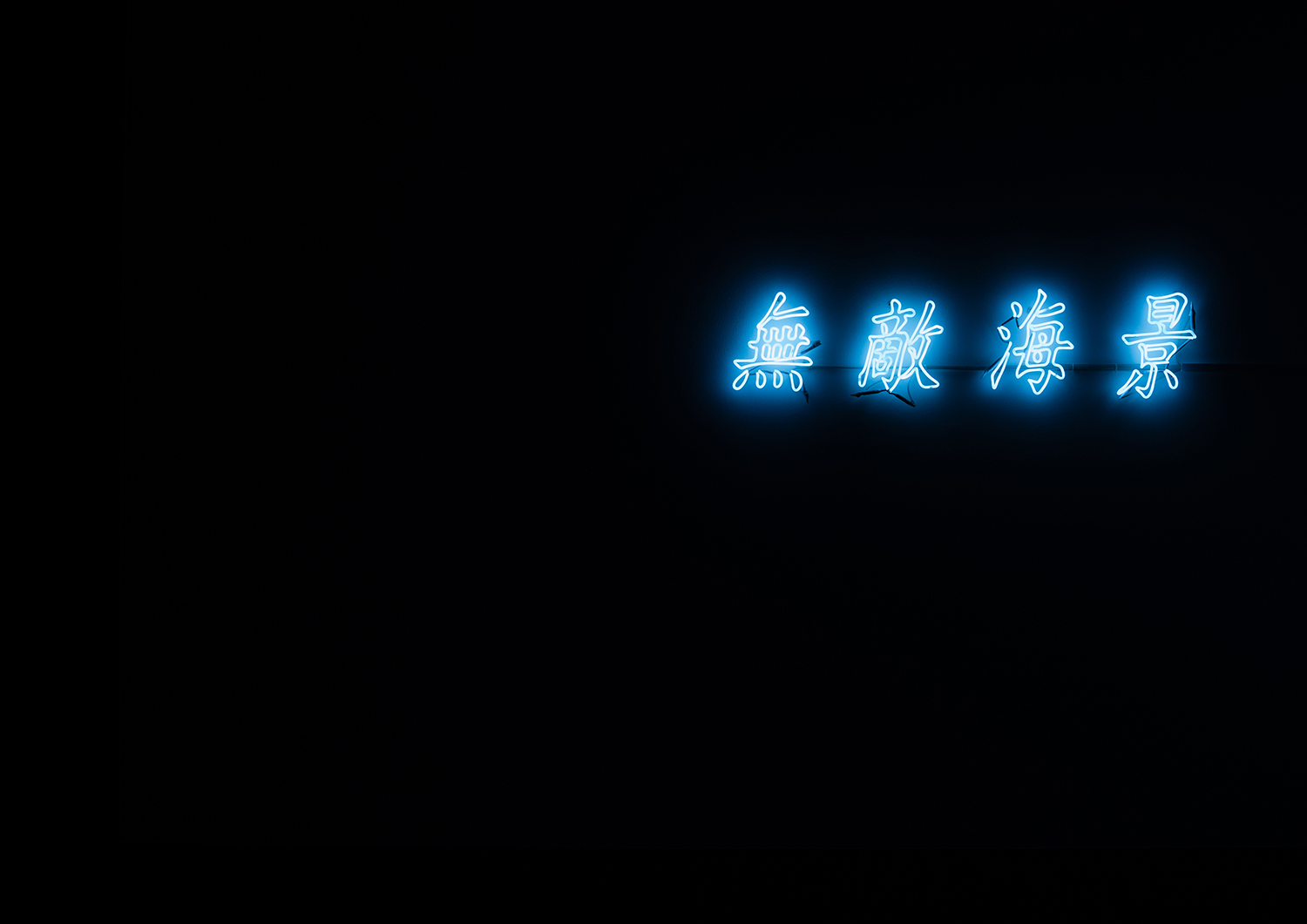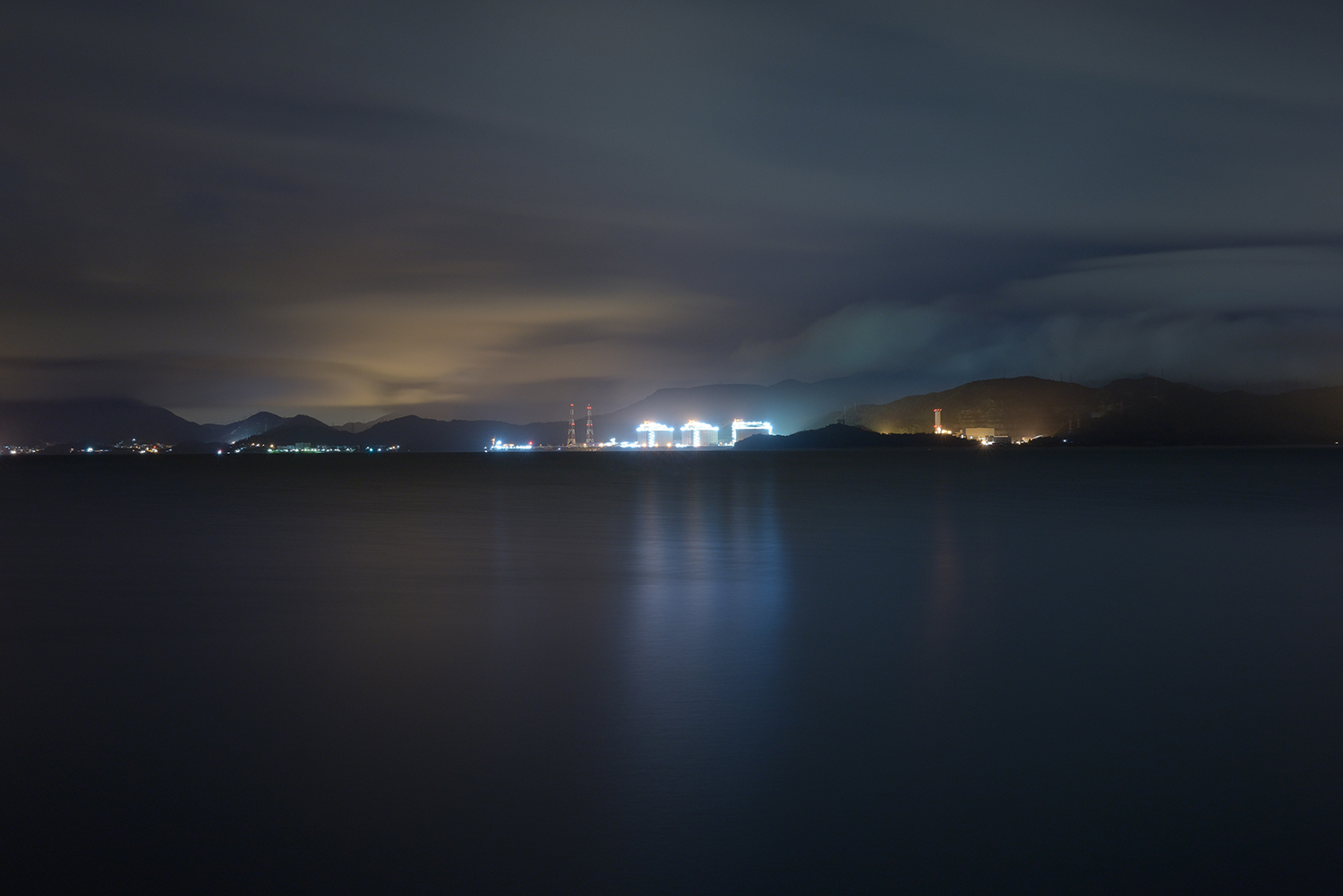Shows
“Breathing Space: Contemporary Art from Hong Kong”


A neon sign of the Chinese characters that translate as “Unbeatable Sea View” casts a gentle blue glow that reflects off the adjacent and opposing white walls, basking the entire, otherwise dim, former barrack in an eerie blue. The piece by Ko Sin Tung was part of the group exhibition “Breathing Space” presented by the Asia Society Hong Kong Center. The irony in her statement is clear: There is no sea view. Under the repurposed bunker’s low ceilings, it felt like there was no breathing space either. Instead, Ko suggests that we are locked in our own psychological prison. An unbeatable sea view, which can only be had in residences that are built on prime real estate, is what many Hongkongers spend their entire lives working for, and yet can only dream of attaining.
Irony is something that is not lost on the other artists of the exhibition either. Whereas sarcasm points to the direct opposite meaning of what is being said, irony points away from surface level meanings to something a little more difficult to verbalize, as if existing vocabulary is being used only to create a language that is yet to exist. Such feelings can be intuited from the works of the 11 featured artists, the majority of whom were born in the 1980s. The exhibition surveyed the cultural, economic, historical and political pressures exerted on Hong Kong, and the new spaces and possibilities that these forces carve out. As in the paradox of an immovable object meeting an irresistible force, the confrontation of pressure and space creates contradictions, which many of the works embody.


Just opposite the neon piece by Ko was a series of photographs, which surrounded a column of bricks. The installation, titled Defense and Resistance (2013), was created by South Ho and documents a performance by the artist in which he used the bricks to build four walls around himself. “Made in Xianggang”—“Xianggang” is the Mandarin pronunciation of “Hong Kong,” where Cantonese is spoken—is emblazoned in both English and Chinese on each of the bricks, prophesizing a future in which “Hong Kong” is overwritten, demonstrating the city’s current complex relationship with mainland China. While the walls acted as a protective barrier, they also trapped the artist, rendering him immobile. This artwork accrues a new layer of meaning in 2017 with the symbolism of the wall paralleling the displays of xenophobia and rising nationalism seen and felt internationally. Ho raises a resounding question: How do we change, when all we want is to stay the same? The “we” in the question is further complicated by Inside Outland (2013) by Siu Wai Hang. Comprised of still and moving images, the frames of which document the very waters that separate Hong Kong from the mainland, Siu’s work is a reminder of those who swam to the shores of Hong Kong to seek refuge, including the artist’s own father, and the complexity in distilling “we” from “they.”


The exhibition spilled outdoors at the expansive Asia Society site, where new commissions were placed in an attempt to give viewers incentive to make use of real breathing space. Perched on a terrace looking out to the harbor, Chloë Cheuk’s …Until I am Found (2017) dissolves the image of the city through a viewfinder consisting of three clear globes. Visitors peer through the orbs to see an image of the city projected upside down. The projection gains a “fake” quality, as if it were a photograph plastered to the inside of the spheres—only when the visitor disturb the arrangement do they find that there is no technology-enabled trickery involved—this is purely light meeting density, superimposing the virtual and the real. The strangeness of the experience is enough to steer us into rethinking the lenses and perspectives through which one views the city.
Collectively, “Breathing Space” embodied not a meditative breath but was suggestive of gasping—an aggressive fight for oxygen before one suffocates, or as if one is confronted with a shocking image. It was a testament to the spirit of Hong Kong.
“Breathing Space: Contemporary Art from Hong Kong” is on view at Asia Society until August 13, 2017.







